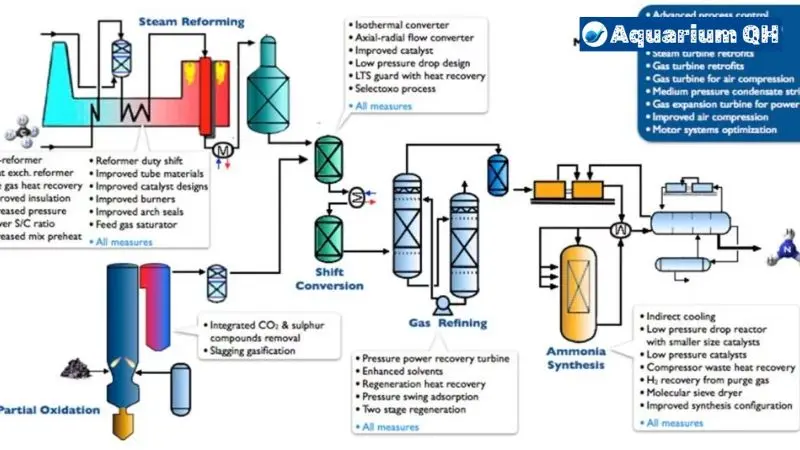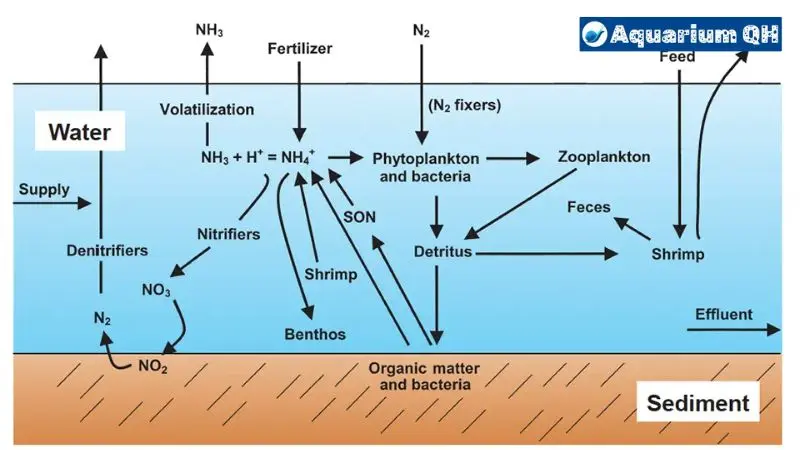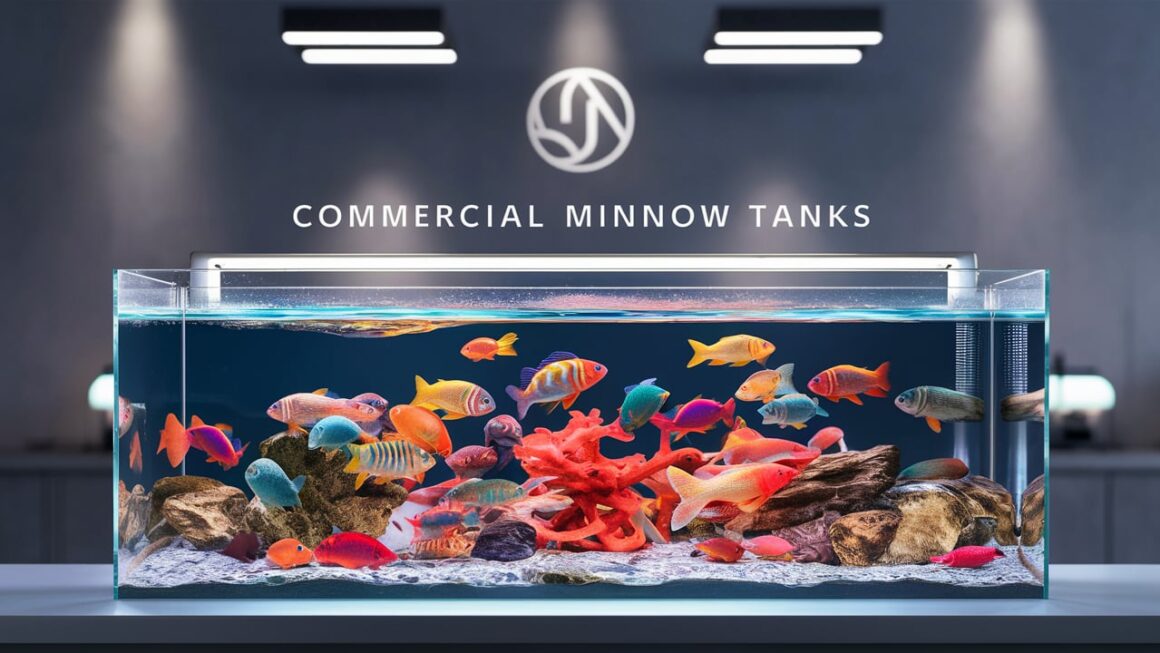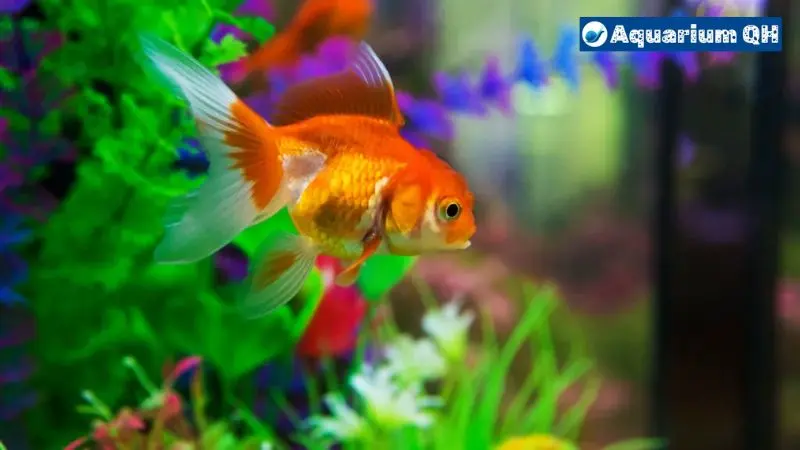Ammonia not converting to nitrite in aquariums can be a concerning issue for fishkeepers. This failure in the nitrogen cycle can lead to toxic ammonia buildup, jeopardizing the health and well-being of aquatic inhabitants. Understanding the reasons behind this problem and implementing effective solutions is crucial for maintaining a healthy aquatic environment. Let’s explore with Aquarium QH.
Introduction to Ammonia and Nitrite

In aquariums, ammonia (NH3/NH4+) is a natural byproduct of fish waste, uneaten food, and decaying organic matter. It is highly toxic to fish, even in small concentrations. However, in a well-established aquarium, beneficial bacteria convert toxic ammonia into less harmful substances, primarily nitrite (NO2-).
Importance of Ammonia Conversion
The conversion of ammonia to nitrite is a vital process in the nitrogen cycle of an aquarium. Nitrite, though still harmful to fish, is less toxic than ammonia. Further, it serves as a precursor to nitrate, which is relatively benign and can be removed through regular water changes.
Factors Affecting Ammonia Conversion

Several factors influence the efficiency of ammonia conversion in an aquarium.
Water Parameters
Maintaining stable water parameters, including pH, temperature, and alkalinity, is crucial for the growth and activity of beneficial bacteria responsible for ammonia conversion.
Biological Factors
The presence of sufficient beneficial bacteria, particularly Nitrosomonas species, is essential for converting ammonia to nitrite. Insufficient bacterial colonies can lead to ammonia spikes.
Environmental Conditions
External factors such as overcrowding, overfeeding, and poor filtration can disrupt the nitrogen cycle, hindering ammonia conversion.
Common Issues with Ammonia Conversion

Insufficient Beneficial Bacteria
Newly established aquariums or those with inadequate bacterial colonies may struggle to convert ammonia efficiently, leading to toxic levels.
High Ammonia Levels
Excessive fish waste, overfeeding, or dead organic matter can overload the system with ammonia, overwhelming the beneficial bacteria.
Imbalanced Nitrogen Cycle
Disruptions in the nitrogen cycle, such as sudden changes in water parameters or medication use, can stall the conversion process.
Symptoms of Ammonia Not Converting to Nitrite
- Fish gasping for air at the water surface
- Clamped fins and lethargic behavior
- Cloudy or foul-smelling water
- Elevated levels of ammonia and nitrite in water tests
Solutions to Improve Ammonia Conversion
Proper Tank Cycling
Allowing sufficient time for the aquarium to establish beneficial bacterial colonies before adding fish can prevent ammonia spikes.
Monitoring Water Parameters
Regular testing of ammonia, nitrite, and nitrate levels can help detect imbalances in the nitrogen cycle early on, allowing for prompt corrective actions.
Introducing Beneficial Bacteria
Supplementing the aquarium with commercial bacterial additives or using established filter media from matured tanks can boost the population of beneficial bacteria.
Conclusion
Ensuring the efficient conversion of ammonia to nitrite is essential for maintaining a healthy aquatic environment. By understanding the factors influencing this process and implementing appropriate solutions, fishkeepers can prevent toxic ammonia buildup and promote the well-being of their aquatic companions.
Unique FAQs
- 1. How long does it take for an aquarium to cycle?
The cycling process typically takes 4-6 weeks, during which beneficial bacteria establish colonies to convert ammonia and nitrite.
- 2. Can water changes help reduce ammonia levels?
Partial water changes can dilute ammonia concentrations, but they do not address the underlying cause of ammonia buildup. Proper tank cycling and maintenance are essential for long-term control.
- 3. Are there any natural ways to boost beneficial bacteria in an aquarium?
Introducing live plants, which harbor beneficial bacteria on their surfaces, and adding aquarium-safe materials like ceramic rings or lava rock can enhance bacterial colonization.
- 4. Can ammonia spikes occur in well-maintained aquariums?
Yes, sudden increases in ammonia levels can occur due to overfeeding, overcrowding, or disruptions in the nitrogen cycle, even in established tanks.
- 5. Is it safe to add fish during the cycling process?
It is not advisable to add fish to an uncycled aquarium, as they can be exposed to toxic levels of ammonia and nitrite. Fishless cycling is recommended to establish a stable nitrogen cycle before adding aquatic inhabitants.




